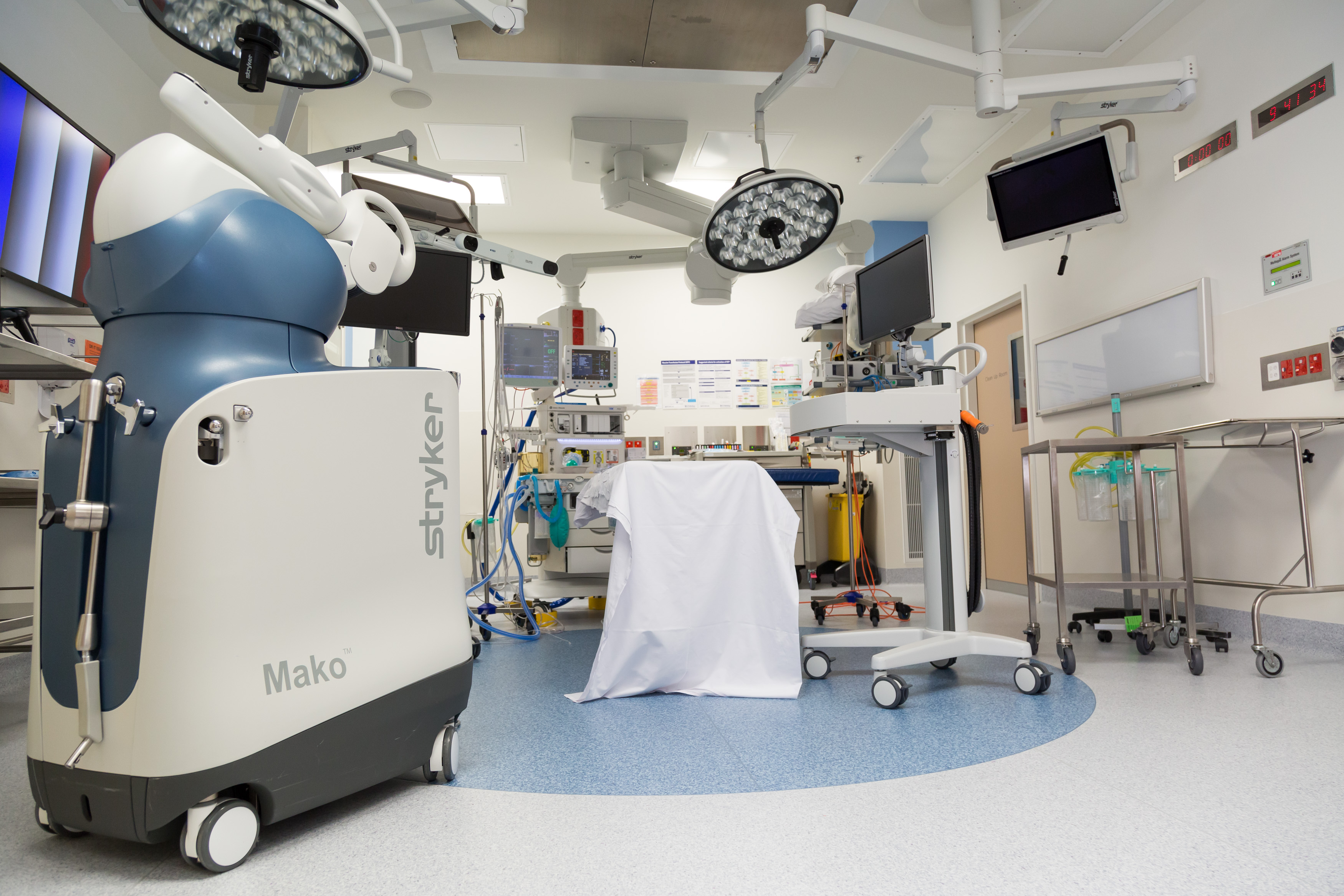
Robotic Surgery
While robotic or robot-assisted surgery has been around in Australia since the early 2000s, at Gold Coast Private Hospital we strive to ensure that we remain at the forefront of advances in medical technology.
Gold Coast Private Hospital is currently home to the following systems:
Da Vinci Xi Surgical System, currently used to support:
- Urology
- General Surgery
- Gynaecological oncology
- Gynaecology
Mako XI, currently used to support:
- Partial Knee Replacement
- Total Knee Replacement
- Total Hip Replacement
Velys, currently used to support:
- Partial Knee Replacement
- Total Knee Replacement
ROSA, currenly used to support:
- Partial Knee Replacement
- Total Knee Replacement

